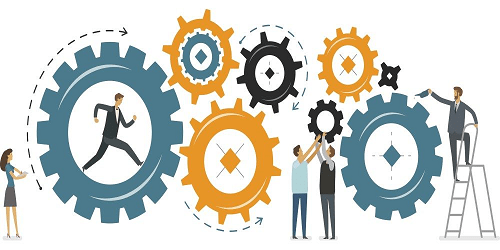
9.25.20 – SSI – Scott Goldfine
Even since I entered the security industry in the late 1990s I heard time and time again from alarm dealers and professionals across the country how the SedonaOffice software was integral to their company’s efficiency, effectiveness and as a consequence profitability and success.
Seemingly overnight, the solution was adopted by more than half the industry’s top dealer companies and through the years parent company Perennial Software continued to expand the platform to make it even more powerful. It is not hyperbole to state that those companies and products revolutionized the alarm industry.
It’s also no wonder the most visible of Perennial’s co-founders, Michael Marks, was inducted into the SSI Industry Hall of Fame earlier this year.
Given that legacy and footprint among security’s best-run installation and monitoring firms, when the business was acquired and merged with Bold Technologies in 2018, combined with two other leading software vendors and subsequently reintroduced under the Bold Group collective, it meant a lot more than Marks’ early retirement. That is why I spoke with current management for the September issue’s main feature.
Among the gents I kicked it around with was Greg Polley, who since January has been Bold Group’s V.P. of implementation and project management. He brings a unique perspective, having been part of a dealer company and a SedonaOffice power user. So besides getting the skinny on Bold Group and its solutions, I took the opportunity to pick his brain about how security dealer/integrator companies can improve their operations.
“Security dealers are wise to continually seek efficiency. Anything they can do to be more efficient helps them to grow, scale and deliver value. Efficiency really applies everywhere. One element of this would be to integrate systems — streamline data entry and make use of a single portal that spans billing, support/service, alarm history, etc. Have all platforms integrate with their entire process and systems so staff works from one book of truth with regard to the customer’s needs. Disparate systems lead to errors, manual redundant data entry, lack of real-time data and poor customer service.
“Another important element is process. Often people/companies lean on technology to solve their process problems when in actuality it’s a tool to help the human process. Very often, issues can be addressed by looking carefully at the processes in place and finding efficiencies in reworking or implementing better processes. Also strive to automate workflow. Automation helps minimize multiple, complex interactions with the operator. If they can bring technology to the table via integrated systems and solid automated processes, they are bound to be more efficient.”
Naturally, he couldn’t help but work in some degree of plug for Bold’s wares but their utility is hard to deny. Other tips Polley offered included:
- Make it easier for a customer to pay. Provide a web portal with links to invoices, statements, past-due notices, etc. with a link to pay their bill.
- Equip techs with an app to improve cash flow, create a better customer experience and eliminate manual redundant data entry.
- Don’t settle for the various workarounds with software built and used by people outside your industry. Work with the experts in your trade.
I also asked Polley about common business areas in which dealers/integrators struggle.
“Sometimes best practices fall by the wayside when they are just trying to get things done — they are focused more on the day-to-day than the long-term vision. The best dealers and integrators take time to work directly on improving their business plan. Employee engagement, process planning, accounting practices are all keys to business success. Not having that long-term vision in place can significantly impact the outcomes and success of an organization.”
He told me another struggle is the inability to have partners that can integrate into their automation platform.
“It’s extremely hard to integrate various systems and some systems these days aren’t building an open platform to allow for these integrations. Companies within this industry need to allow customizations across systems, which will help a dealer to integrate better and drive more efficiencies across the board. The lack of integration in some cases is causing them to be slaves to what central station has in place. This impacts the ability for them to be successful.”
